- How Does Zynga Design Its Games?
- Are There Incubators Which Actively Teach Lean Startup Principles?
- Can Lean Startup Methodology Be Applied To Psychiatry?
Full Interview Audio
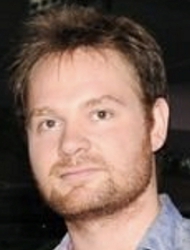
Personal Info
Favourite Books:
- Gödel. Escher, Bach: An Eternal Golden Braid by Douglas R. Hofstadter
- The Four Steps To Epiphany by Steven Gary Blank
Most Influenced By:Elon Musk
Twitter: http://twitter.com/thorernstsson
Website: http://casualcorp.com
Interview Highlights
This is a condensed, lightly edited transcript of an audio interview. The full audio is available and highly recommended. The interviewee may post clarifications in the comments.
Adrian Bye: Today I’m here with Thor from Casual Corporation. Thor, thanks for joining us. 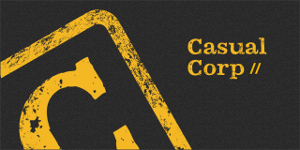
Thor Ernstsson: Glad to be here.
Adrian Bye: Can you tell us a little bit about your background. You’ve been at Zynga and a bunch of other interesting companies.
Thor Ernstsson: Sure. I got 12 years of startups under my belt, starting with mobile gaming back in 2001. I got in early, setting up their first remote studio on the East Coast. I left a couple of years ago and set up a couple of social gaming companies. One was a health care company. Out of this collection of experiences I realized that there is a better way to do this and decided to set up Casual Corp to help other people create companies.
Adrian Bye: How long were you at Zynga?
Thor Ernstsson: From 2009 to 2010.
Adrian Bye: What did you work on at Zynga?
Thor Ernstsson: It was as a lead architect, sometimes called studio CTO of Zynga East, which was the studio behind FrontierVille. Originally, we set out to build a certain kind of game, and then, over a nine months period, it morphed into what became FrontierVille, had a lot of game mechanics in it that weren’t in any other game and then within weeks, every social game had them copied.
What we did there was pretty good in terms of the genre of casual games and we impacted most of the other games at Zynga as well. We took social games like Farmville and looked at what was working in other games, like quests, narrative and some sort of progression through the game and resources and introduced all that to it. We were the first social game with quests, that had some sort of characters and a progression that they went through, and a storyline.
The games are all about psychology, of getting invested in a process that is very simple. Then you start building an artificial value system around it of things that are now yours, and now you are hugely invested in a game or game environment where you keep doing that. You keep playing and nurturing it because you don’t want to lose out on what you have. It’s just a psychological principle of some costs and a few other things that we used to build on to go into it. Now we realized that that applies well beyond just gaming. You can build entire products, entire companies, around those products based on the same principles.
Adrian Bye: What were the kinds of things that you were cross-parading across those games?
Thor Ernstsson: One of the things that we did was needing your friends in order to go through the game. It wasn’t just about them helping, it was about introducing friend-gating. That generates social pressure, not just for engagement but re-engagement. If I don’t have a lot of friends that are playing the game and I know you in real life, I might call, email or text you to go back to the game. Now you’re using the game because I’m asking you as your friend. What’s also happening is that you’re going back to the game, and while you’re there you play a little bit longer and a little bit more. That’s one of the deepest forms of engagement. You drive actual social pressure for re-engagement because now people are coming back to a product. And it doesn’t have to be just games. LinkedIn endorsements are great extensions to that into non-gaming products. There is a slight pressure to have to go and maybe endorse someone and look at them. 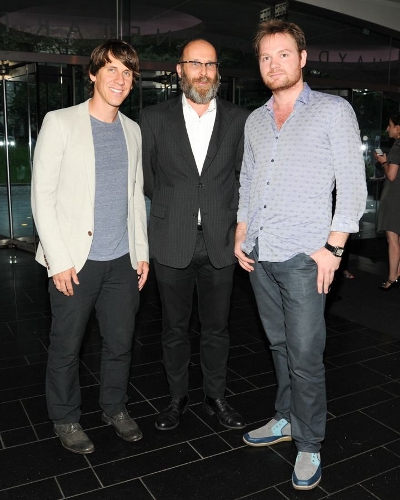
Adrian Bye: You mentioned that you went from Zynga off to a health care company. This would seem like different fields. How do these relate?
Thor Ernstsson: The health care company originally was started around the concept of applying Zynga-style mechanics, not games, but social pressures and these types of incentives and triggers, and applying that to the context of health. The basic premise was taking outbound marketing platform, applying game mechanics to it and applying it in the health care context.
Adrian Bye: What are some examples of how that would work?
Thor Ernstsson: You would go onto a website that may have been promoted to you through your health insurance company. You authenticate and with that we actually get your health records. Then we drive recommended content and communities so that you can engage with other people based on health context and health situation. We ultimately sold the product to a few people, and then, over time, morphed into more of a health tech company. I moved to New York to set up Casual Corp.
Adrian Bye: Now you’re basically building an incubator here in New York?
Thor Ernstsson: It’s not an incubator. There isn’t really a good label for it. The closest model is basically a private equity model for how companies are created. We find the founders that are domain experts at something. We look at both the market opportunity and give them a process to tie everything together and then all the tools to execute them. Those tools include product development, marketing, branding. Then we set them up with our network and our environment for growth. That environment includes other founders, Vcs, investors, and also executives from large companies that are our clients. So one part of it is this new business creation part and the other part is working with Fortune 500s or Fortune 100s in an innovation-consulting setting. That gives our new companies and our founders the ability to talk to C-level people at Fortune 100 companies which normally they wouldn’t have access to.
Adrian Bye: I started to get a decent foundation in Lean. How much is what you’re teaching Lean, and how much of it goes beyond that?
Thor Ernstsson: A Lean Process with a purpose is a good way to sum it up if you’re familiar with the Lean Principles. Lean Startup teaches you to notice when you’re not doing the right thing but doesn’t really tell you what to do next. We start with an aspirational vision. That is something you can never achieve, but that guides all your experiments and all the things you try to do. The foundation of it is much more customer development than it is Lean.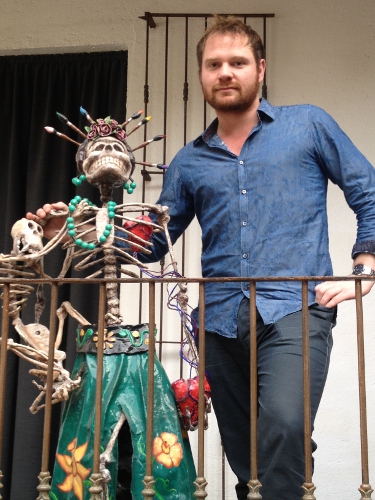
Adrian Bye: Do you want to talk about some of the companies you’ve been working with?
Thor Ernstsson: Sure. We are doing a psychiatric assessment company out of DC. The founder is a psychiatrist, a world expert on mood disorders, and is ironically fairly entrepreneurial. He went through an abbreviated version of our fellowship program. Our fellowship program is where we use to teach people this process and we’re about to launch that company called Good Measure.
Adrian Bye: I’m having a hard time understanding how Zynga-style virality and testing can be applied to a psychiatric company.
Thor Ernstsson: It’s really the process around customer validation. Generally, when somebody says they launch a company it’s kind of do x, y and z. It’s going to be a social community around something, people discover new people, they’re going to find new content and manage their existing networks. Before the product exists we have the founders identify customer segment. When a customer segment is large enough to build a company around, all they do is create hypotheses around what values that customer segment will get out of the product and leave it at that. There is no product development at that point. Then they identify a sub-section in that customer segment that are their early adopters. Those are the people that will love the product and hug you because you made such an impact in their lives. Even if the product doesn’t exist yet. The thing is that if you can’t come up with a value statement that’s at least perceived to be important enough to drive some sort of behavior change or investment from your target audience, then either you don’t understand your audience or your values and proposition well enough, and you’re building something that people most likely don’t care about.
The Zynga part of it really is about identifying those leading indicators before the product exists but then building out the product through structured experiments. The first product might be a summary newsletter or email blast. What you’re building is a social network over time, but you’re validating one step at a time that what you think you are doing is actually what’s going on. Often companies start by doing a lot of things and then the founders realize that they can’t execute against 15 things really well, and choose to pick one based on whatever criteria they have. As long as they’re focused on doing a good job at that, they can have something real. Because once you really dig in and get users that are really passionate about your product or are highly engaged, then you can scale that out. You can add additional features to get a broader user base, but you have to start with the core users. You can’t start by building something everybody likes a little bit, you got to build something that a few people love. 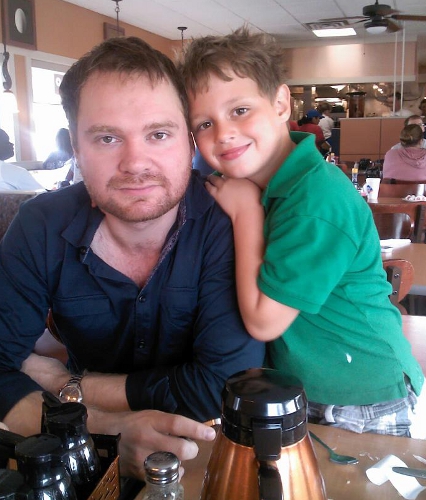
Adrian Bye: So in the psychiatric case, what were the users and what did they love?
Thor Ernstsson: The users are physicians and primary care physicians. The current hypothesis is that they don’t have any psychiatric expertise. Physicians and a lot of health care professionals don’t know how to treat behavioral health problems, don’t even know how to diagnose them. So the first product is a digitized screen that physicians can roll out and actually bill for. They’ll get paid to administer a screen for behavioral health problems and in the same process or from really not doing anything new other than just that screen, they provide better care.
The process we went through was basically focusing on the physicians’ needs and what it takes to drive them to action. We learned in the process that the quality of care wasn’t something we could lead with. Even if that happens as a byproduct of what the service does, that wasn’t enough to compel physicians to action. So it’s also a question of what is the most compelling value proposition behind the product. And that impacts how you talk about it, how you market it, how you distribute it, and all the viral loops that go with it. If I don’t incentivize people to adopt the product properly, then no matter how good it is it’s going to be a much more difficult proposition to get them to use it widely.
Adrian Bye: So in the case of mental health care, how do you instill viral loops?
Thor Ernstsson: An example of an effective viral loop around behavioral health, or really any kind of health, is having some sort of care giver, some sort of person that you trust to monitor your adherence. If you have to fill out a survey for example every month, nobody wants to do that. But if you appoint somebody else to help you out with that and you both get notified a few days before the deadline you don’t want to be the person that doesn’t do it. So there is social pressure for you to go and fill it out. Those types of things are pretty compelling when it comes to behavior change.
Adrian Bye: Have you heard of Max Levchin? He is one of the co-founders of Paypal. He’s talking about hard, valuable and fun, and it seems like what Max is talking about is in fact the opposite of Lean. He wants to sit and work on hard problems, and not pivot around finding the easiest path forward.
Thor Ernstsson: Casual Corp and HVF are similar in the way that we tackle these problems. What they do is they apply a common technology toolkit to hard problems. The things that we do, what we are talking about here, are actually hard problems in the end. Solving all matters relating to lack of psychiatric expertise is an unbelievably hard problem.
We’re solving problems around user behaviors and user expectations, and you can’t do that in a vacuum. One of the hardest things for our founders to come to grips with is that we challenge almost every assumption they make about things that they think they know very well.
Adrian Bye: What are some examples?
Thor Ernstsson: The one I gave earlier about physicians being most interested in quality care. What we learned is that we only got their attention as soon as we put first that this helps them make more money. Things like that happen through informal focus groups, user testings, formal focus groups and other tools while the company is in exploration mode. But as soon as possible we want to validate those assumptions with real products.
When we go through this process they all assume that their clients care about the same things they do and that the clients’ behaviors are exactly what they expect them to be when in reality that’s not true. Very few people make a purchase decision based on just what one company tells them. They first consult with their friends and experts or sales people, and at that point the company is completely out of it. We help them build products around how to engage users in what they’re doing already in the context of their brand. At first people are adamant about how their customers or their users are in a certain way, and once they realize that their basic assumptions often don’t even hold up, it becomes a new world to them. It’s always very interesting to watch that transformation.
Adrian Bye: I went through that process as well, and some of my concepts about the market were just wildly wrong. It was humbling.
We got a few minutes left. Have you got some other things that we haven’t covered that you would like to talk about?
Thor Ernstsson: Yes, maybe our fellowship program, which is basically taking this whole process that we apply both in corporate setting and also for startups and teaching it to aspirational entrepreneurs. It’s very much on a case-by-case basis as well. We realized that we needed to pay closer attention to individual needs.
Adrian Bye: How does the fellowship program work? How much does it cost?
Thor Ernstsson: It doesn’t cost anything because the goal is to go through this so that we can build a business together. There is a fairly selective process to get in. Once you’re there, you’re working with the Casual Corp team and other people that are going through the program or have gone through it on building a business. It’s sort of an entrepreneur-in-residence. It’s both a platform but also a library around rapid development and prototyping that we can deploy things very quickly.
Adrian Bye: Alright. Thor, thank you very much for the interview. That was great.
Thor Ernstsson: Yes, good talking, and look forward to catching up soon.









